In a week where Virgin Australia named a new chief executive, this week’s Throwback Thursday looks at the last time there was leadership change at the top of the airline. This story from the January/February 2010 edition of Australian Aviation magazine features Gerard Frawley’s interview with Brett Godfrey as he prepared to step down as Virgin Blue chief executive.
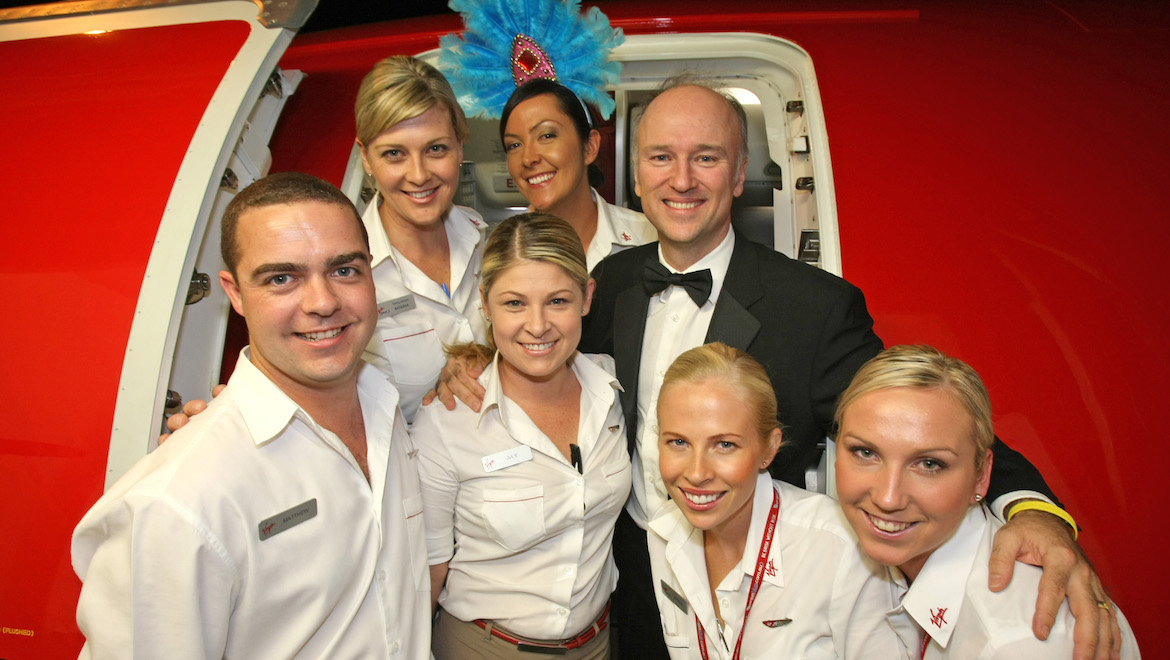
‘BG’ is about to leave the building.
Sometime in 2010, BG, as Brett Godfrey is dubbed by Virgin Blue staff, will leave his relatively modest office in the airline’s “Virgin Village” corporate HQ in Brisbane for the last time as CEO as he steps down from leading Australia’s second largest airline group with which his energetic, driven personality is synonymous.
In barely a decade since Virgin Blue’s launch in August 2000 Godfrey, still only in his 40s, has taken the airline from a business plan sketched out on a beer coaster at the pub to Australia’s second biggest airline with about a one-third share of the Australian domestic market, New Zealand domestic and short haul international operations with Pacific Blue, and a nascent long haul international division in V Australia.
“People have to realise this wasn’t just the last 10 years of my life, it took me some years to find some bloke who wore a sweater and a goatee (Virgin Group’s Sir Richard Branson) to back the concept,” Godfrey told Australian Aviation in a recent interview. “I spent a lot of time marching around banks and airlines in Europe and was told how stupid I was and everything, so this has been for me probably … well, to be honest, a 13-year focus to the degree that it’s played havoc with my ability to be a better father and husband.”
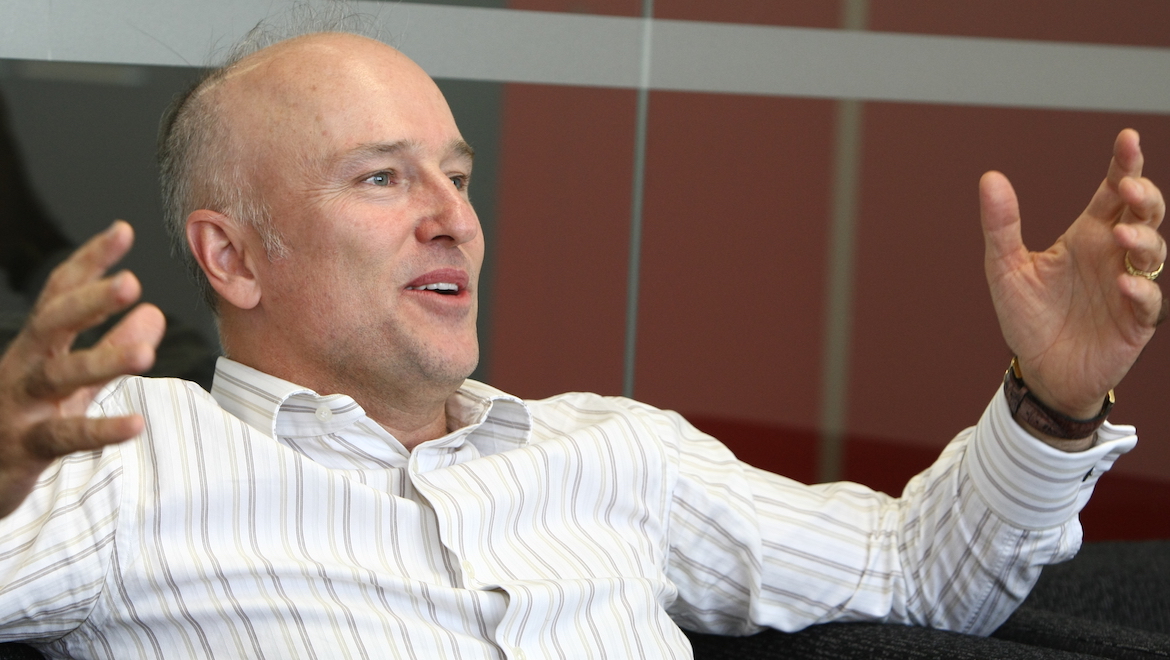
It has certainly been a hectic, tumultuous time. From operating a handful of second hand 737-400s in a four cornered domestic airline fight against Qantas, Ansett and Impulse, to the shocks of the Ansett collapse and September 11, to the half sale to Patrick Corporation, the public float, boardroom battles and the divestiture by Toll Holdings (which had taken over Patricks), the launches of Pacific Blue and more recently V Australia, the evolution of the ‘New World Carrier’ business model with its premium seating and airport lounges, the rise of new competitors in Qantas’s Jetstar subsidiary and Tiger Airways, and the economic slowdown and Global Financial Crisis, it has been a remarkable decade.
Through all that Godfrey’s energy and drive has led the creation of one of Australia’s best known, loved and distinctive brands, and an airline group operating over 80 Boeing 737-700s and -800s, Embraer E-Jets and Boeing 777-300ERs to over 30 destinations in Australia, New Zealand, the Pacific Islands, South East Asia and the USA.
“We’ve taken some big chances, some big risks, but I look at it now and think ‘Alright, we got what I set out to do’,” Godfrey said. “We’ve got domestic Australia and the Tasman and Pacific with 737s, it’s all working. We’ve now set the scene for V Australia and I think it will be successful.”
With the airline’s main elements in place and such a momentous, rewarding and productive time at the helm, it’s understandable Godfrey has decided it is time for a change of pace and a year off for some much needed family time and R&R.
“I love people here like they’re family and no doubt six months after being out of the job, lying on a beach somewhere, I’ll be kicking myself for leaving the best job on the planet. I have no doubt, we’ve gone from two staff to 6000 staff and I just feel terribly privileged in the whole process. But I just also realise that I need to have a good year off.”
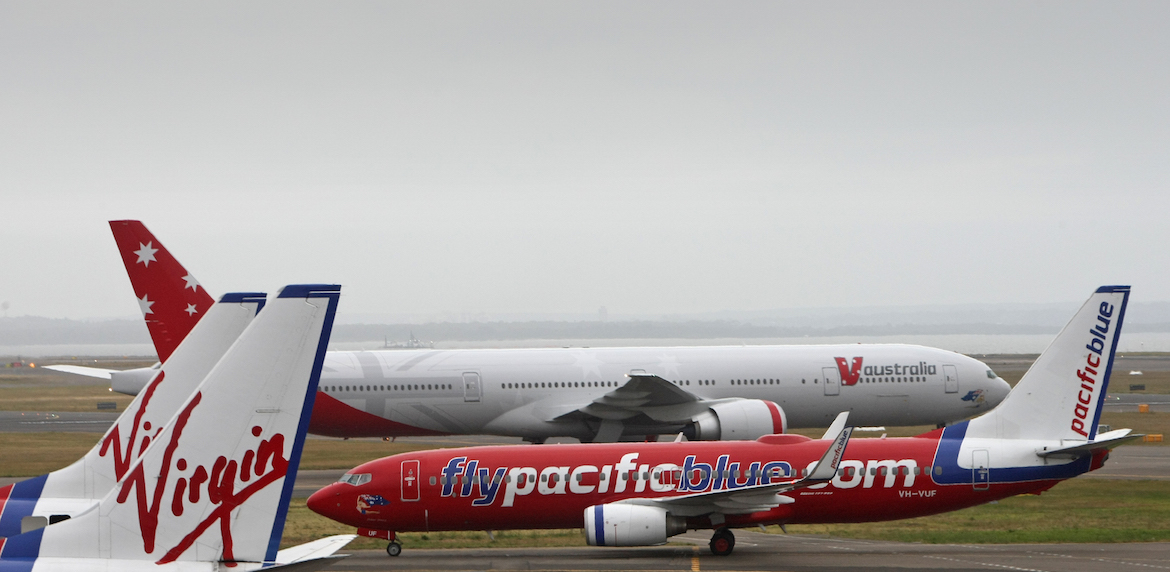
Godfrey announced his decision to step down last July, and will remain on at Virgin Blue through 2010 as his successor is found and brought on.
“I’m going to stay connected to the business, I’m still one of the largest shareholders and I don’t have an intent to leave. I still think there’s a great future for this airline and I will stay on for probably at least a year in some way, shape or form. Not as the ‘Ghost of Christmas Past’, but as someone who is there and if the phone call is required to say ‘What do you think about this?’ then I’d be glad to give my time.”
He’ll certainly leave an enormous legacy, and some big shoes to fill.
“BG conceived the airline, implemented the LCC plan and then adapted it to become a New World Carrier. He is one of the few airline executives in the world, if not the only one, to enjoy that status,” noted Derek Sadubin, chief operating officer of consultancy the Centre for Asia Pacific Aviation.
“The airline is a vastly different animal from the one conceived in 2000, a decade ago,” Sadubin told AA. “It arguably therefore needs a different sort of leader, one who has experience in international markets, and can manage the complexity of what is now a very large company.”
Certainly Godfrey himself sees his departure as providing an opportunity for a new style of leader at Virgin Blue.
“Now what I think it probably needs is a leader who can at least step into and really understand the culture – that’s first and foremost – but someone who perhaps is not as (much) a risk-taker as I am, I’m probably not good for the business,” Godfrey said in a moment of reflection.
“I don’t know, going forward, that might be a bit harsh, but I don’t think I get excited by business as usual. So that’s probably why it’s a good opportunity now to find someone else to have a go.”
It’s hard to imagine a more corporate styled, managerial CEO at the helm of Virgin Blue, a company known from its inception for its cheeky attitude, media stunts and celebrity studded product launches invariably involving Virgin Group founder and Virgin Blue financial backer Sir Richard Branson, and its casual, no-worries demeanour. But Godfrey’s comments suggest he sees for Virgin Blue a time for consolidation and a more measured approach, now that the future major corporate plan elements are in place.
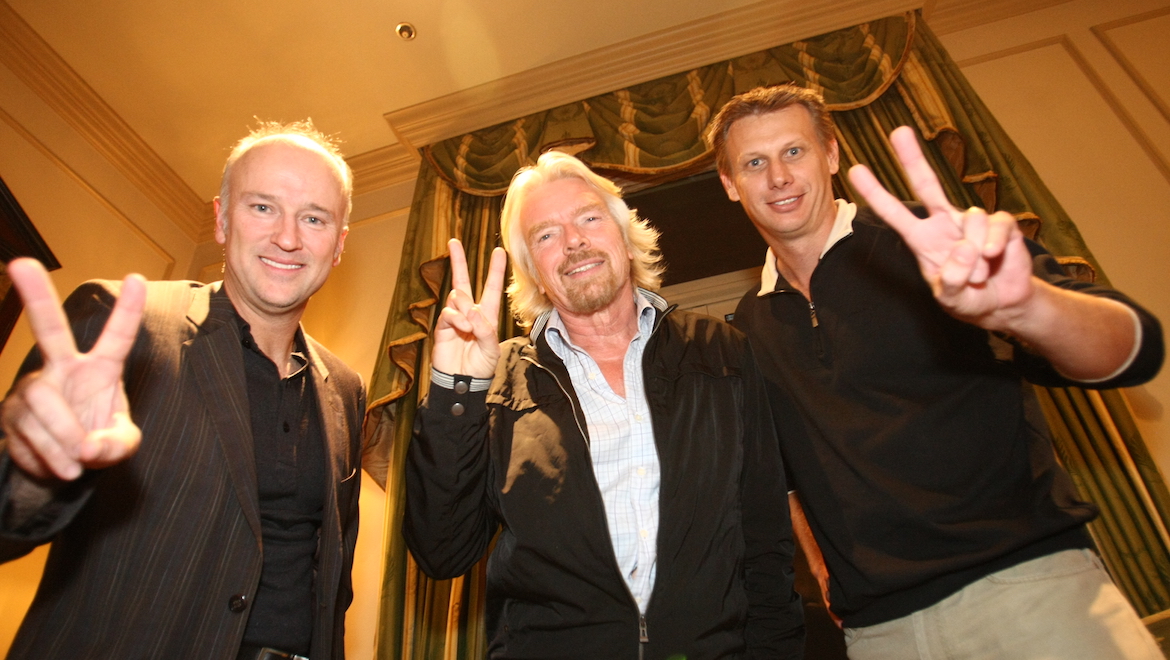
“I see the business … (as having) gone on this tremendous growth profile and, to be honest, I’m probably too entrepreneurial for this business now. By that I mean my greatest motivation in life is beating the shit out of a competitor. It’s not about beating KPIs (key performance indicators) or long term growth plans, it’s about… seriously, it’s a competition and I like to do better. I think the only way to judge a victory is by the competency of a competitor. So I’m not one of these blokes who focuses on absolute improvement, it’s about doing better than the other guys and that’s being entrepreneurial, I guess, and it’s worked.”
Whoever the Virgin Blue board appoints as Godfrey’s successor should give a strong indication of the company’s direction post BG. An executive recruitment company has been engaged to search for Godfrey’s successor, but the VB boss has committed to stay on until the end of 2010 if necessary, until “we find the right person”.
Explained Godfrey, “The focus is finding the best person, quite frankly, so that’s where we’re at. We had a few changes at senior management level here over the last little while (including the imminent appointment of a new CCO/chief commercial officer), we’ve got some good people and there’s no doubt that people inside the company are going to be considered. It’s not my call, to be quite frank, it’s the board’s decision, but I certainly know that they’re considering internal candidates.”
In the meantime there’s still much remaining on Godfrey’s ‘to-do’ list, from guiding the airline out of the 2009 economic downturn, defining it’s ‘Airline of the Future’ business plans, consolidating the position of V Australia, introducing an alliance with Delta Air Lines, buying 30-50 new 737s, and laying the foundations for a renewed regional airline push.
“There’s the Delta deal that’s got to get done, there’s a significant order to be done, there’s a CCO to replace and there’s a reservation system that needs to be installed,” said Godfrey of his major goals.
“There’s two other key deals which I won’t elaborate on but there’s two other things that are on that list that I’d like to achieve.”
The “two other things” may well be a renewed assault on regional Australian markets, which Virgin Blue currently only serves in a limited way with its Embraer E‑Jets, and new opportunities for V Australia, which may or may not include acquiring Boeing 777-200LRs to operate ultra long range nonstop services such as Perth-London and Sydney-New York.
“Sure it is!” Godfrey answered when asked if reports of buying 777-200LRs were accurate. But, “So (are reports) of us looking at ATRs and Q400s and Saab 340s.”
Godfrey said the airline’s development team’s task is to continually evaluate opportunities, including new aircraft types, “and if they don’t, they get a stick from me!
“Have we looked at 200LRs? Shit, yeah! And if I hadn’t then they should fire me because we look at every opportunity that’s out there. We’ve looked at A330s. We’ve done more work on A330s than on 200LRs. Why? We don’t think the A330 is the right plane for the longer term but it is available today and our hole in our network is mid haul.
“So, yeah, that’s true,” Godfrey said of studying 777-200LRs. “But does that mean we’re going to do it? No. Have we talked to Boeing about it? Yeah. Have we talked to Airbus about A330s? Yeah, but they’ll say ‘Those bastards will never buy anything off us!’ That’s not true, it is the right aeroplane for mid haul markets at the moment, in the absence of the 787, and if we wanted to go down and fly against Jetstar into some of the markets they do – which we ultimately believe our brand against theirs, we win, that’s our view – we would look at 330s. (And) we’ve looked at Q400s.
“There honestly is nothing imminent but we have looked at every potential aeroplane type,” Godfrey confirmed.
But of all the new types Virgin Blue has looked at for its fleet, possibly the most likely to be acquired is the 737-900 stretch of the 737NG series.
“We’ve looked at 737-900s,” Godfrey confirmed. “Why? The 900 is hardly any different from the 800s and we fly 700s so why the hell not 900s if they give us an extra 20 odd seats? If we can get the right deal out of Boeing for a 900 then we’ll go with 900s.”
Any 737-900 buy would likely come out of a new deal Virgin Blue is currently negotiating with Boeing for new 737s to replace existing leased aeroplanes and allow for new growth. Godfrey announced VB’s plans to acquire 30 to 50 new 737s in a speech to the National Aviation Press Club last September.
“Whether it’s 50, 30, 100, it hasn’t been finalised, but this is a good time to be looking,” Godfrey reiterated.
The airline certainly has form in buying new aircraft at advantageous times when the global airline industry is in a downturn – after the September 11 2001 terrorist attacks it placed a big order for new 737s at heavily discounted prices that have sustained the airline’s growth since.
“We believe we’ve got one of the best deals this century – basically four months after September 11 committing to an order.”
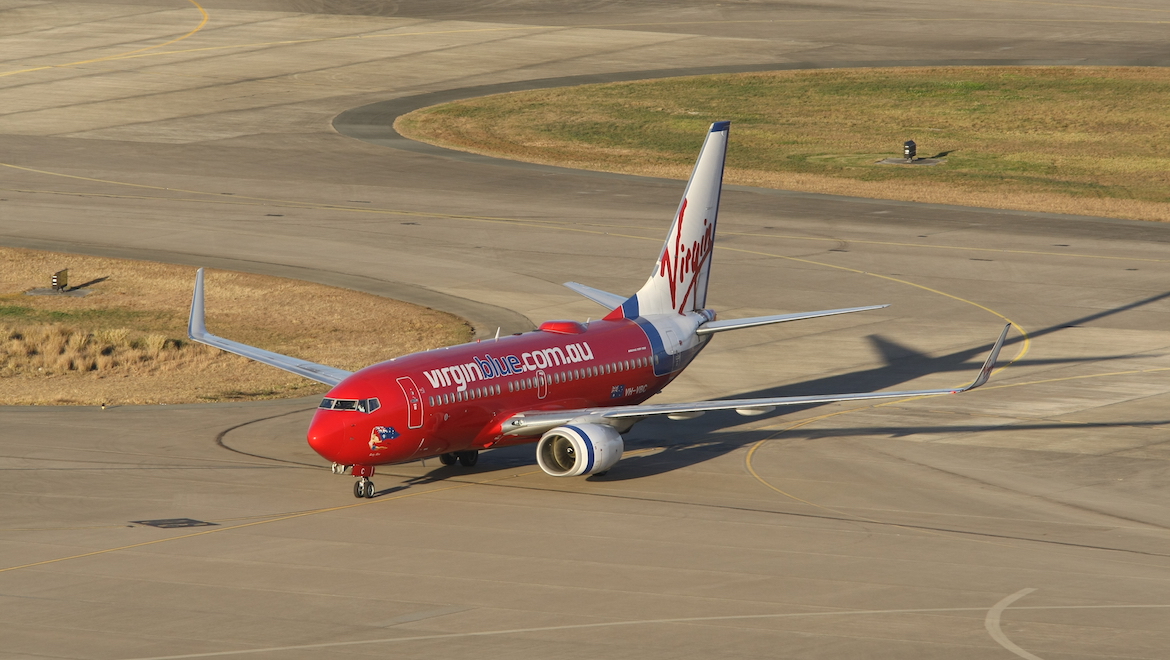
In fact, many of the aircraft ordered under that deal have yet to be delivered – the Boeing Commercial Airplanes order website shows Virgin Blue has ordered in total 52 737s and by mid December had taken delivery of only 30 of those. But the current pricing for that 2002 deal expires in mid 2010, hence the drive to secure a new deal at today’s advantageous prices.
“So by July of 2010 our deal is gone so we have to have a new one in place,” Godfrey explained. “I don’t want to leave it ’til the last second and one of the things … on (my) dance card (before I leave) was to have the fleet profile supported by the board in terms of the strategy, and executed.”
The number of aircraft in that buy depends on the scope of the deal, and whether Virgin Blue opts just to replace existing leased aircraft in its fleet, or acquire extra aircraft to support growth.
“We’ve got somewhere around 30 leased aircraft and we don’t have to keep those after they’re eight to 10 years old. So when we say ‘How many is it?’ Well, it’s only 30 if we (replace) all the leased aircraft. If we want some semblance of growth over the next five years then it’s north of that number. If we don’t want old aeroplanes (in the fleet) then it’s north of that number again. That’s what we were over in Seattle (recently) talking on, we haven’t concluded any deal at this time but I’m hopeful we can get something done.”
Regional routes in Virgin Blue’s sights
As for regional expansion, “watch this space,” Godfrey advised, but either a new type, ie a turboprop, or perhaps more Embraer E-Jets are candidates for the fleet profile Godfrey plans to have in place before stepping down.
“We made it clear that we wanted to look at any market that Qantas was flying lonely on, so there are still a few of those out there,” Godfrey explained of where Virgin Blue regional expansion might go, pointing to his airline’s recent intra-state WA foray as an example. “Now we had looked at ATRs, we had looked at Q400s, (whereas) the Embraers are not really a regional aircraft at all.
“The 190 can almost fly transcon, the 190 we’ll have ETOPS for shortly and where can you fly with that? Oooh, possibly into New Zealand. So you can’t fly a turboprop that far and nor would you want to sit in one if you could.
“We haven’t fully deployed them properly,” Godfrey said of the E-Jets’ potential. “If we go back about four years, we actually got into a capacity shortfall where we couldn’t get 737s, the Boeing order book was locked up and we couldn’t get any. So we took more Embraers than we actually planned to.
“So the Embraers have been doing ‘stocking stuffer’ stuff – they’ve been going into markets where they’re probably not the ideal aircraft but in the absence of having none, we’ll put them in there. We’ve got them earmarked for better things to do, which when we’ve got more Boeings we’ll swap them out.”
That should see the E-Jets operating on longer thin routes.
“Particularly the 190 shouldn’t be doing anything under an hour and a half to two hours.”
One of the shorter sector flights the E-Jets are currently deployed on is Sydney-Canberra, with it’s 30-35 minute flying time and critical role in the VB network in meeting the requirements of lucrative government corporate travel accounts. VB currently flies eight E-Jet Sydney-Canberra flights each weekday, but Godfrey in effect concedes that level of frequency is not enough.
“We look at Sydney-Canberra, we think that’s a market we have to look seriously at. Having jets on there, it was nice at first to call it ‘The Capital Shuttle’ and say you were the only airline to fly (only) jets. (But) The reality is we’re looking at more frequency there but I don’t really want to put too many more jets on it. That will probably not be resolved in my timeframe but we are looking at, the development guys are looking at, what if we ended up with a turboprop aeroplane? What’s out there now that works really well on those sorts of markets?”
Another market VB is watching closely is domestic New Zealand, where subsidiary Pacific Blue is fighting for marketshare against Air New Zealand and Jetstar.
“It doesn’t make us any money today,” Godfrey confirmed. Pacific Blue started domestic NZ services in November 2007, and by May 2008 was profitable, before it “started to go south,” with the deteriorating NZ economy, Godfrey noted. “However, having said that, there are some strategic advantages of it being where it is, it feeds traffic on to the Tasman, (and) it represents about two per cent of our total capacity so, with all due respect to it, it is a very minor part of our business.”
Looking forward in New Zealand, “So the next 12 to 18 months, can it sustain three carriers?” Godfrey asked. “Probably not, but that’s a shame for Air New Zealand or Jetstar. We don’t see ourselves doing much more in that market at the moment, but we don’t see ourselves doing any less.”
V Australia’s performance “awful”
Of much greater concern are the losses being generated by V Australia.
“Awful,” was Godfrey’s summation of V Australia’s current performance. United Airlines boss “Glen Tilton said about 10 days ago, and I’ll quote him almost verbatim, (that US-Australia) was ‘One of the world’s most profitable routes and we’re losing money on it now’. Well, I can’t sit here and tell you any differently. I think (Qantas CEO) Alan Joyce said about a month ago, the same thing, ‘we’re losing money on it’, and he reckons everyone’s losing money. Well, it’s probably the first time we’ve agreed on something.”
The key issue, Godfrey said, is that “The demand is not emanating out of the US. It is at a price but we’re giving the seats away. The leading fares out of the US are still about $1000 Australian and we can get $1000 taking people to Phuket or Bali, even, places that from here in a 737 are about six hours away, versus 14 hours with food and drink and IFE and all that. The market is seriously depressed.”
Godfrey said V Australia was seeing month-on-month improvements in profitability, “but we’re not seeing significant enough improvement to call it the end of that particular pain.”
Unquestionably V Australia has been a victim of economic circumstance. When plans for V were announced in March 2007 the world economy was buoyant and the US-Australia market one of the airline industry’s most profitable. But strikes at Boeing which delayed V’s first 777s, the full force of the Global Financial Crisis, and the arrival of Delta Air Lines as the fourth airline on the previously cosy duopoly market, have all taken their toll. Indeed, V Australia’s $124 million start-up and continuing losses were a considerable contributor to Virgin Blue’s $160 million net loss last financial year.
To stem the damage delivery of some of V Australia’s 777s have been deferred, a joint marketing alliance with Delta Air Lines has been proposed, and new services to outbound tourist destinations of Phuket and Fiji launched.
Godfrey called the Phuket and Fiji services as “gap fillers”, as they take advantage of what would otherwise be downtime for the 777s under the existing US schedules.
“As we get more aeroplanes come on, they’ll become less and less relevant. We may not stay in those markets forever.”
“I think we see V predominantly looking at key cities in Asia and maybe more so north Asia – Japan, Shanghai. V is likely to fly into anywhere that Virgin Atlantic flies into at the moment, so you’re looking at Delhi, you’re looking at Shanghai, you’re looking at Beijing, Tokyo, those sorts of places make a lot of sense… it means while we’re sub-optimal in terms of scale, we’ll have aeroplanes sitting on the ground and have to get some return on them and the only way to do that is go into some of these markets and pull out, don’t be surprised if we do Bali from Sydney or something. But it’s less optimal.”
The planned partnership with Delta Air Lines should help make V Australia’s operations even better optimised. Under that plan, which has Australian Competition and Consumer Commission (ACCC) blessing but is awaiting US Department of Transportation blessing, Delta and Virgin Blue/V Australia would gain access to each others’ domestic networks and coordinate schedules and capacity.
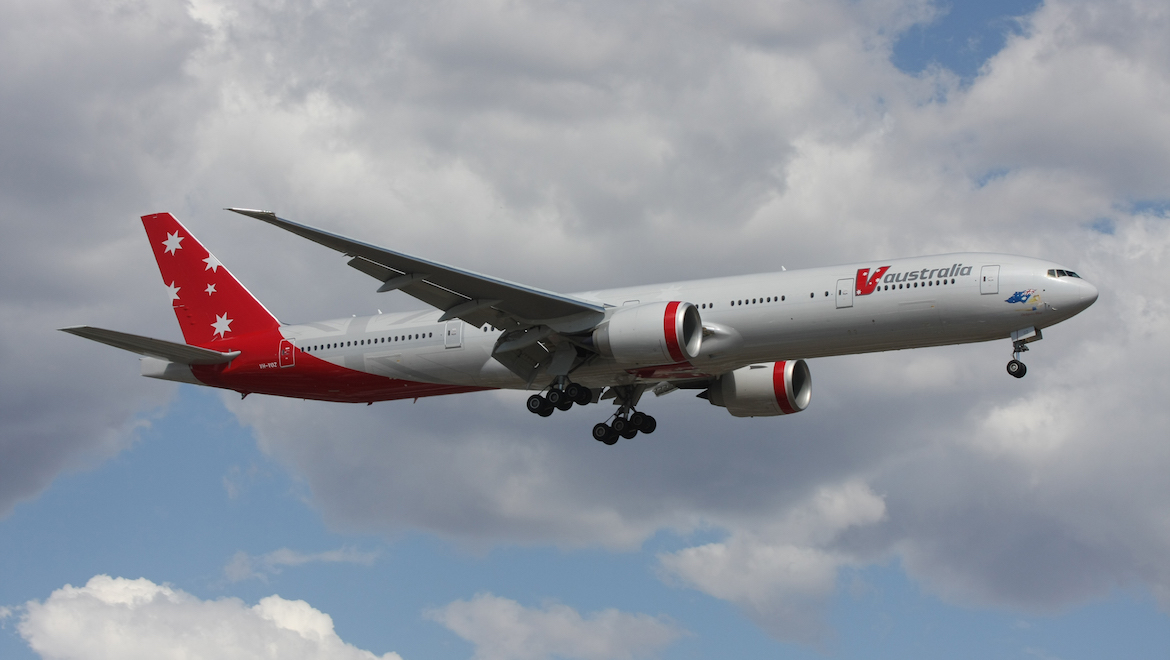
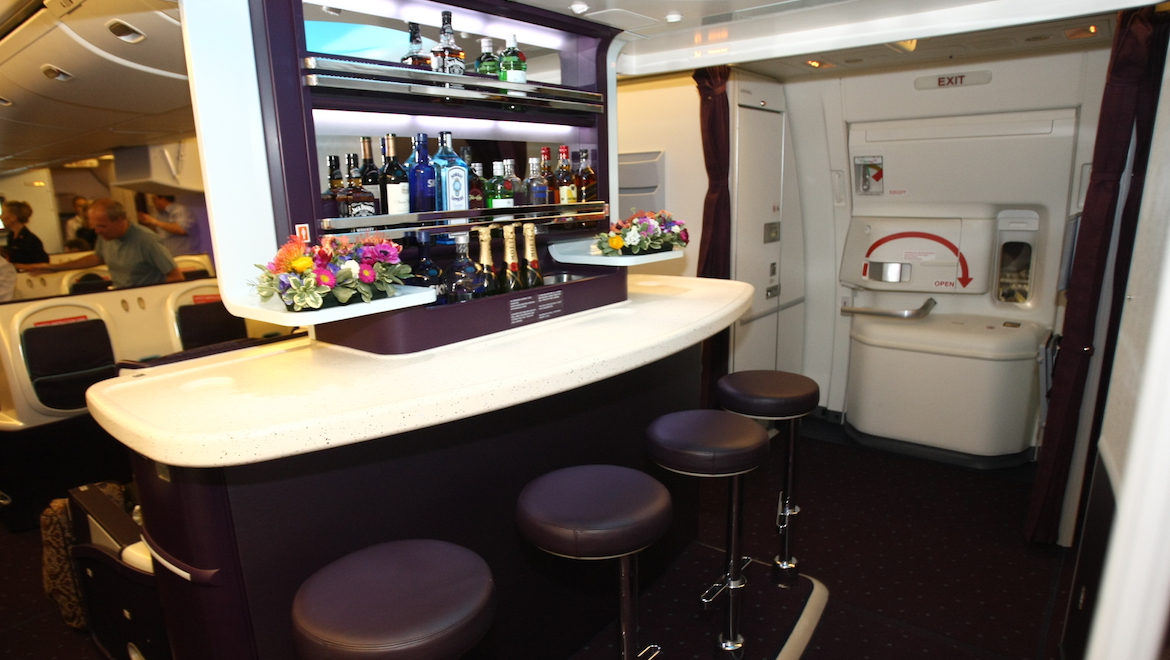
Said Godfrey of the planned alliance, “We’ve made it pretty clear to the ACCC that we don’t see the need – which will disappoint our competitors – under this Delta Agreement to cull capacity or pull it back, we just want to be able to manage it in markets a bit better with times and schedules. So for us there’s not too much capacity there, it’s more a case of there’s not enough demand.”
On face value, as financial commentator Stephen Bartholomeusz wrote on the Business Spectator website, “It isn’t apparent where the public benefit lies in effectively reducing the number of competitors, on that now intensely competitive route, from four to three.”
But, Bartholomeusz opined, “The nub of the ACCC’s thinking, however, may have been encapsulated in a comment from its chairman, Graeme Samuel, who said the joint venture would be likely to assist Virgin Blue and Delta to compete more effectively against the incumbents, Qantas and United Airlines, and create more sustainable competition on the route. It may not have escaped the commission that reducing the threat V Australia poses to Virgin Blue’s financial stability also shores up its ability to compete in the domestic market.”
If the outlook for V Australia, especially with the Delta deal looking well placed to proceed, is looking up, things are looking even better for the core Virgin Blue domestic operation (and Pacific Blue ex Australia international flights) after a particularly poor first half of 2009.
“February is when the shit hit the fan in Australia – February, March and a bit of April,” Godfrey said of the worst of the Australian economic downturn.
“February was the worst month we’d had,” Godfrey said. “We’d been able to budget within three or four percentage points within an annualised basis what our revenue will be. In February we were off, not just double digits but significant double digits … and it scared the hell out of us.”
It was at that time that Virgin Blue began planing to dramatically scale back capacity by reducing aircraft utilisation and even announced plans to cut staff by 400.
“As you know this is not an industry for the faint of heart,” Godfrey noted. “Launching Virgin Blue in the first place was very stressful, before Impulse and Ansett fell over it was stressful; launching V Australia in February in the peak of the bad month was stressful. But all that paled into comparison with the view that, for the first time, we had to make some wholesale redundancies. They were, quite honestly, sleepless nights.”
But, said the VB boss, this was where the airline’s long held philosophy of investing in its staff paid off.
“We put it to our people to see if there were any ways we could mitigate that and we mitigated all bar 12. When I say 12, to be quite honest, those 12 were probably due to go anyway.
“So we really didn’t have a redundancy program at all. Why? Because we said ‘You decide how you want to do it.’ We either have to cut 400 jobs or we’ve got to find ways that we can job share, we can take time off without pay, long service leave now, holidays. We’ve had this coordinated effort where every department did their own thing. One department said ‘We don’t want to cut anybody and we all want to stay. Can we all just work nine day fortnights?’ That was the equivalent of 10 per cent so we said fine and they were happy with that. Others decided what they wanted to do was get paid less but stay on and work.
“It turned out from being a nightmare to actually being one of the highlights of my 10 years here to see how people actually pulled together. It wasn’t just staff, management took pay cuts, I asked the senior execs to take up to a 20 or 30 per cent pay cut and there was no debate. There wasn’t going to be any debate, but there was no debate.”
So not only was Virgin Blue able to ride the downturn without major job losses, the airline is now well poised to ride returning airline traffic, with latent staff, aircraft and capacity already in its system, and it has returned to profitability.
“We’ve come through beautifully in the sense that … we’re very well positioned right now, we’re sitting here seeing the opportunities flow in, we’re sitting here with basically five-eight per cent redundancy built into our people and you know it takes up to 12 to 15 months to get a full crew to people one aeroplane, and yet we’ve got them sitting in the wings waiting. We’re thinking now, we said we weren’t going to switch on any capacity until June of next year (2010); we may switch on quite a bit sooner. We do want to see fares rise, we think the market needs to see that, but we’ve got this inherent flexibility for the first time, we’ve got five aeroplanes that are floating around in the system sub-optimally, and at in excess of $50 million a pop you don’t want those things laying idle.”
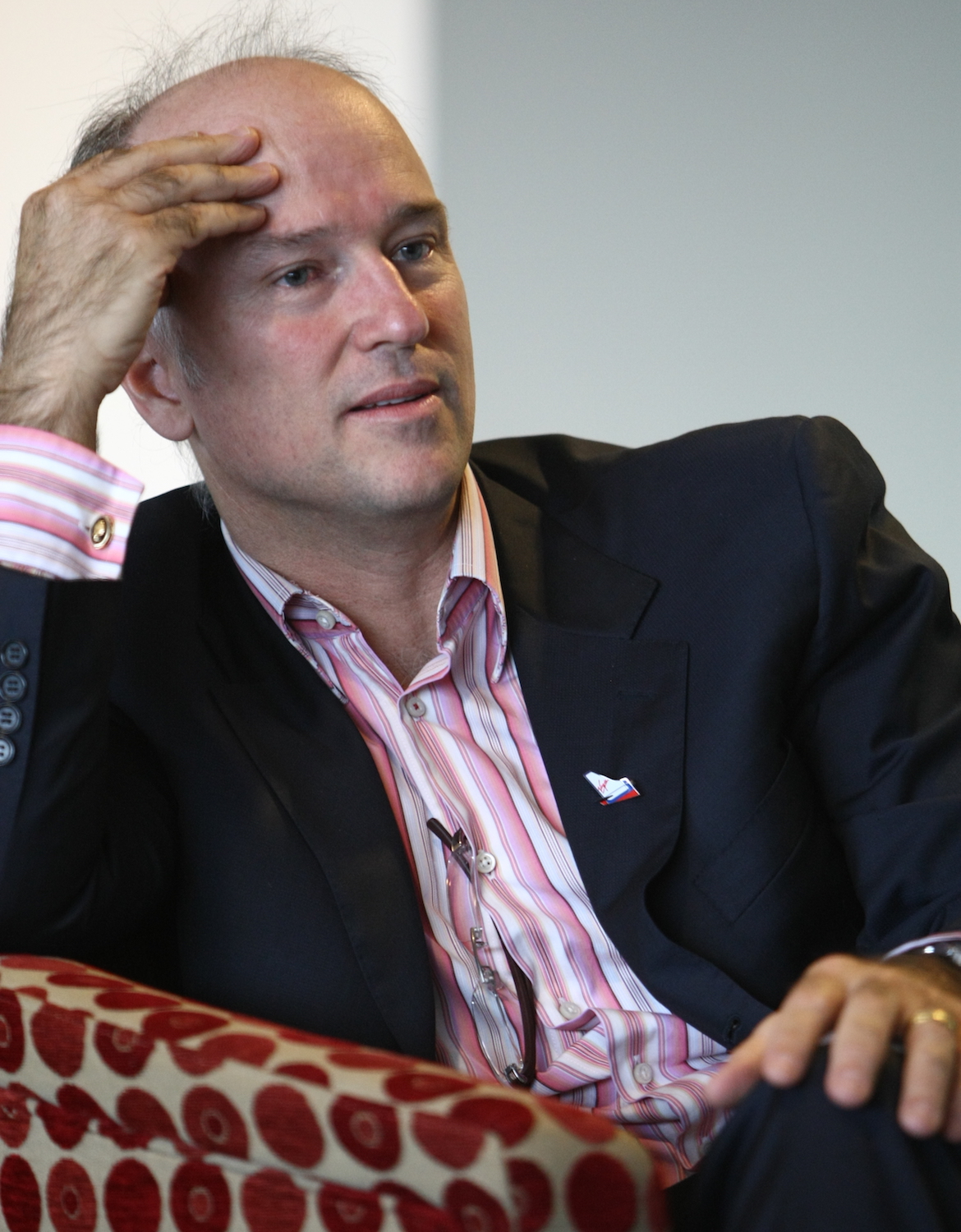
Better still, says Godfrey, is that much of Virgin Blue’s improved fortunes have come at the expense of the Qantas Group.
“We’ve seen a noticeable improvement and Qantas hasn’t. We model our yield and monthly movement in yield versus Qantas. Domestically they’re still 10-12 per cent off on a group basis. So that means Qantas is off probably 15 per cent, maybe Jetstar is up a little, whatever it is, but the net result is 10-12 per cent. (But) We’re slightly better than last year. What that says to me is that we’re seeing this ‘flight to value’ exemplified or magnified, we’re seeing that traffic finally come to us.”
That he attributes to the maturing of the New World Carrier strategy that has seen Virgin Blue morph away from a traditional low cost carrier.
“We’re becoming this fully integrated network player and as a result we are seeing additional traffic come our way because we do the connecting bags, we have the frequency, we have lounges,” Godfrey observed.
“Our corporate revenues are up 20 per cent year over year; our government revenues are up 22 per cent year over year on what has been largely a declining market. So where’s it coming from? It’s not new because the market’s actually shrunk. We know the market’s probably off about five or six per cent – that’s the business market. Leisure has held up a bit better, believe it or not. Qantas will tell you that the front of the plane is empty. Well, it may be empty there but it’s not with us. We’ve seen an improvement in premium economy so what we’ve seen is the flight to value, and we think that’s because of the type of model we have.”
It is here that the difference in business model strategies between the Qantas and Virgin Blue groups are most stark. At a November address to the National Aviation Press Club Alan Joyce jokingly lampooned Virgin Blue’s New World Carrier strategy as a “lost world” carrier strategy, given that Virgin Blue is neither fish (ie a full service premium airline), nor fowl (a pure low cost carrier).
“At the end of the day I think if there’s a lost world model out there, it’s got to be Qantas, mainly because they haven’t grown in the last two or three years,” Godfrey quipped in response. “All the marketshare that Jetstar has grown to has come from Qantas, it hasn’t come from us. So if there’s a dinosaur model out there, I’m sorry, it is Qantas mainline.”
Certainly Virgin Blue’s ability to evolve has shown that it is no lumbering dinosaur.
“Every airline, if they’re smart, will look at their own home market and say ‘How best do we take advantage of the situation?’ Ansett failed so why should we be an LCC?” Godrey said of the background to the New World Carrier strategy. “When Ansett had such a huge marketshare and opportunity, why wouldn’t we take the stick to Qantas if we possibly could, knowing full well that another LCC was going to come into the market at some stage in time anyway? As soon as Jetstar came in, we didn’t want to sit and play in that area.
“I’ve said this a thousand times and no one can convince me otherwise, when it comes to LCCs your loyalty is purely price, there’s no two ways about it. Whereas with us, we’ve got more guests who fly us from choice and they will pay more for that.”
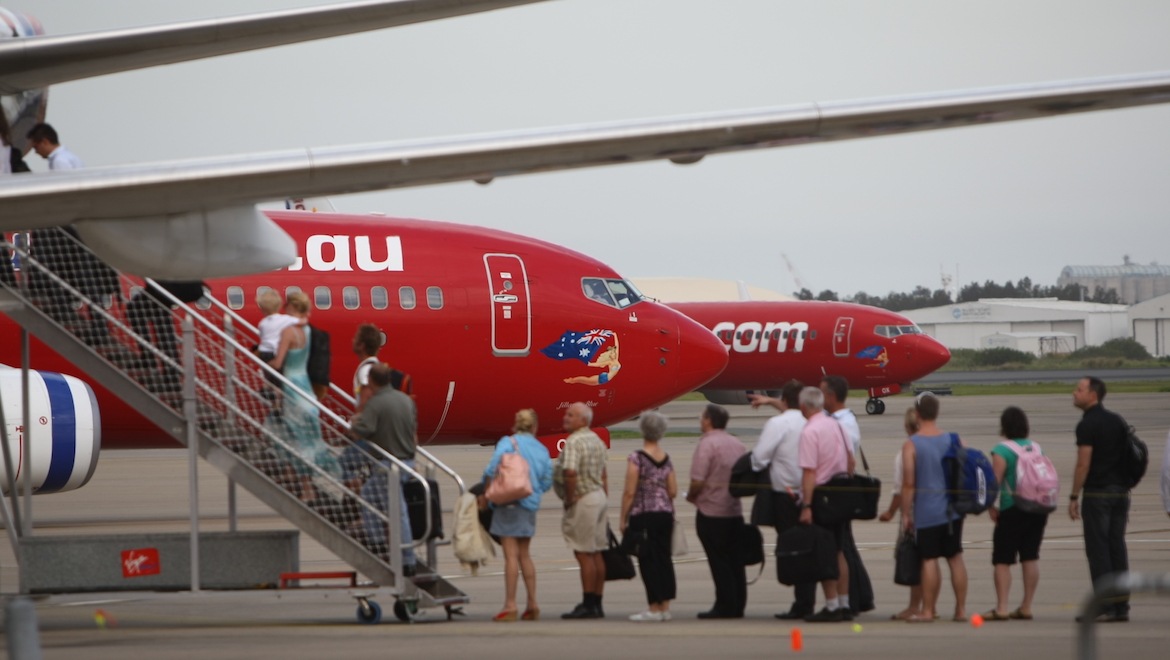
Godfrey is also at pains to point out that Virgin Blue’s product offering it has introduced as it has pursued the higher yielding corporate/business market, from lounges to premium economy to the Velocity frequent flyer scheme, are all positive revenue generators.
And that focus on pursuing the business market is not to say Virgin Blue is walking away from the budget end of the market. At one point VB had looked at establishing an ‘ultra’ low cost carrier as one way of better competing with Jetstar, but instead, under its Airline of the Future plans may instead see VB aircraft flying domestically with three classes, not just the current premium economy and standard economy, but at the back of the aircraft with a budget economy with a tighter seat pitch.
“We’ve got this Airline of the Future concept which will probably see the possibility of having on the same aeroplane LCC, economy and premium economy in the definitions of what we would typically understand what is an economy on a legacy carrier,” Godfrey explained.
But that Airline of the Future strategy is likely to be implemented by the airline’s CEO of the future, with Godfrey’s departure looming in 2010.
Post VB, Godfrey’s plan is basically to have time off, spend more time with his family, and take a step back from the punishing schedule of running an airline.
But it is hard to see the almost hyperactive Godfrey, a known early riser to indulge his cycling passion, taking things too easily.
“I’m not that old and I get bored really easily so I’ll be doing something!” n
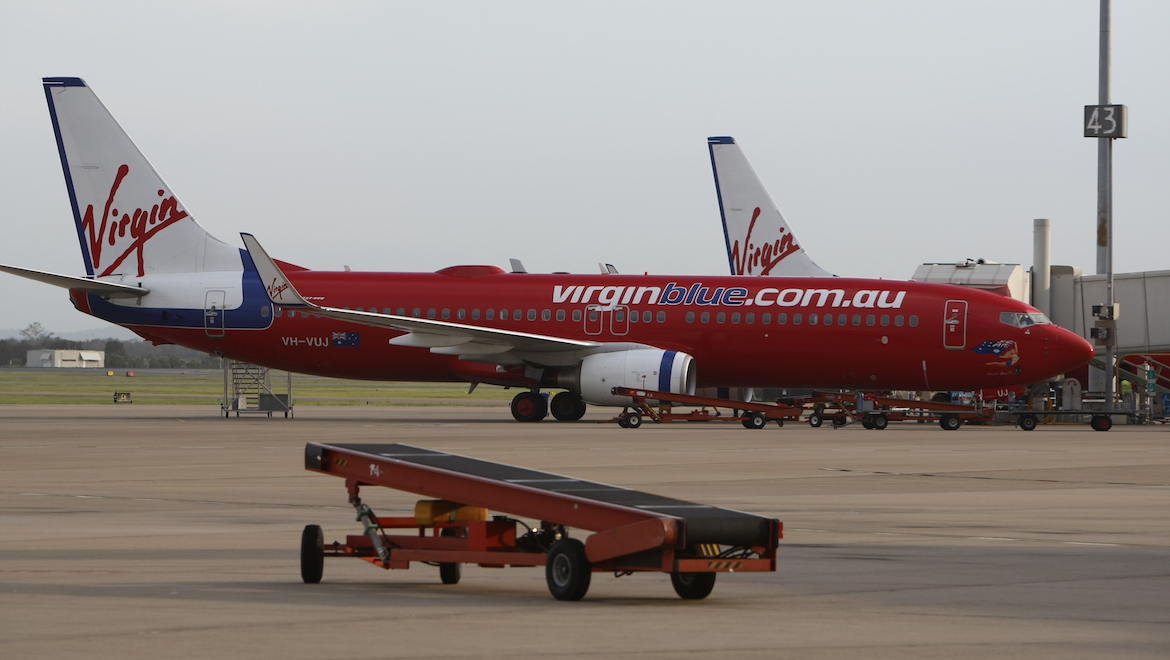
This story first appeared in the January/February 2010 edition of Australian Aviation. To read more stories like this, subscribe here.










